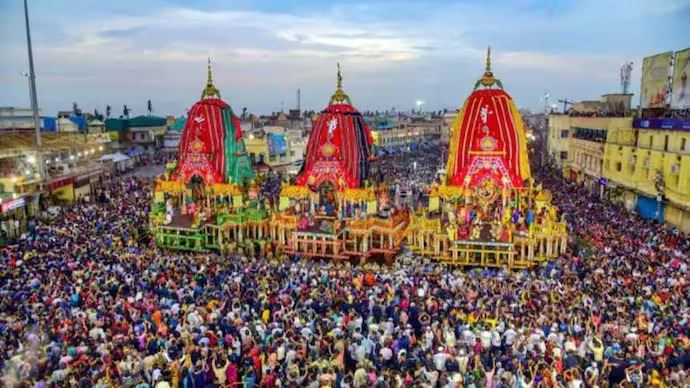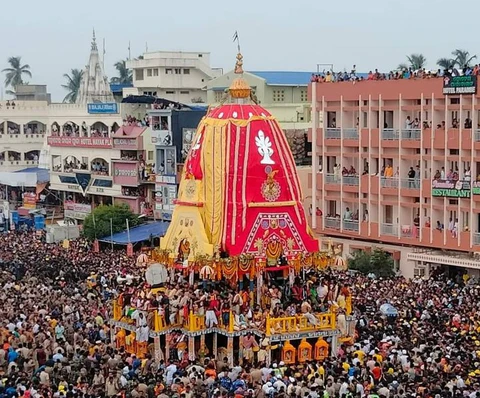As Rath Yatra 2025 begins, let us learn about Lord Jagannath’s majestic chariot, which is called Nandighosa or Nandighosh. Nandighosh is an integral part of the Rath Yatra festival, symbolizing the divine journey of Lord Jagannath in Odisha’s Puri. Nandighosh is also known as Garudadhwaja, Chakradhwaja, and Kapidhwaja, reflecting its deep spiritual symbolism with Lord Hanuman presiding as its guardian deity.
Nandighosh is considered the divine vehicle of Lord Jagannath, symbolizing his journey from the Jagannath Temple in Puri to the Gundicha Temple during the Rath Yatra festival in Odisha.
During the Rath Yatra festival, Nandighosh, along with the chariots of Lord Balabhadra (Taladhwaja) and Devi Subhadra (Darpadalana), is pulled through the streets of Puri, attracting lakhs of devotees.
The chariot has spiritual importance as it is believed to be a sacred vessel that carries the deity, and devotees consider it a privilege to pull the chariot as a form of devotion.
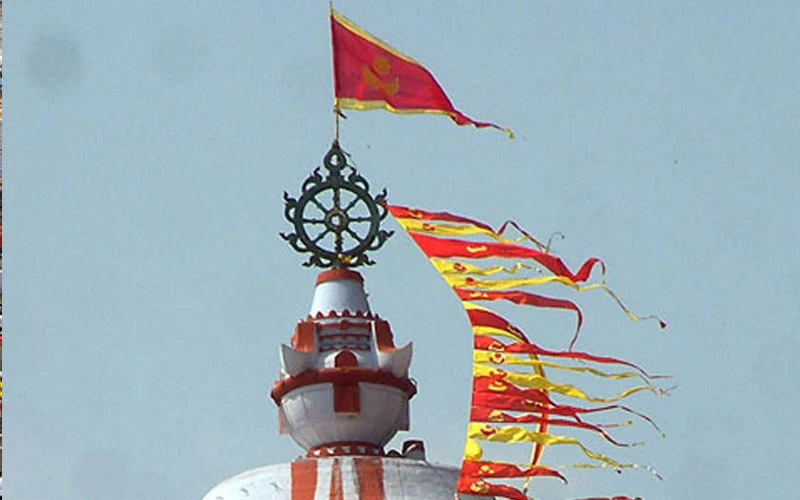
Pulling Nandighosh is considered a sacred act
Pulling Nandighosh and even touching its rope is considered a sacred act, allowing devotees to connect with the divine and seek blessings. The Rath Yatra festival and the chariot’s journey are believed to promote spiritual growth, self-reflection, and devotion among participants.
Pulling the chariot is considered an act of great merit, believed to grant blessings and lead to liberation (moksha) from the cycle of birth and death. Many devotees even believe that by sacrificing their lives under the wheels of Nandighosh can make their souls attain salvation.
Why devotees sacrificed their lives under Nandighosh’s wheels?
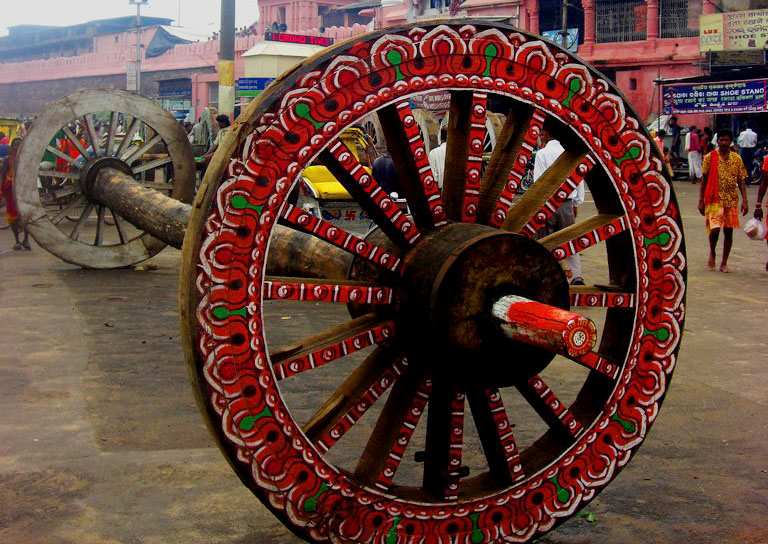
In the past, some devotees would sacrifice themselves under the wheels of the chariot, believing it would grant them spiritual liberation or moksha. The British colonial government banned this practice in the 19th century due to concerns about public safety and human rights.
For some, dying under the wheels of Nandighosh was seen as a form of martyrdom, demonstrating extreme devotion to Lord Jagannath. The act was believed to grant spiritual liberation, freeing the individual from the cycle of birth and death.
However, in the present day, the focus has shifted from physical sacrifice to spiritual devotion, with devotees emphasizing the importance of living a virtuous life and demonstrating devotion through acts of service and compassion. The idea of dying under the wheels of Nandighosh has become more symbolic, representing the devotee’s willingness to surrender to the divine and seek spiritual growth.
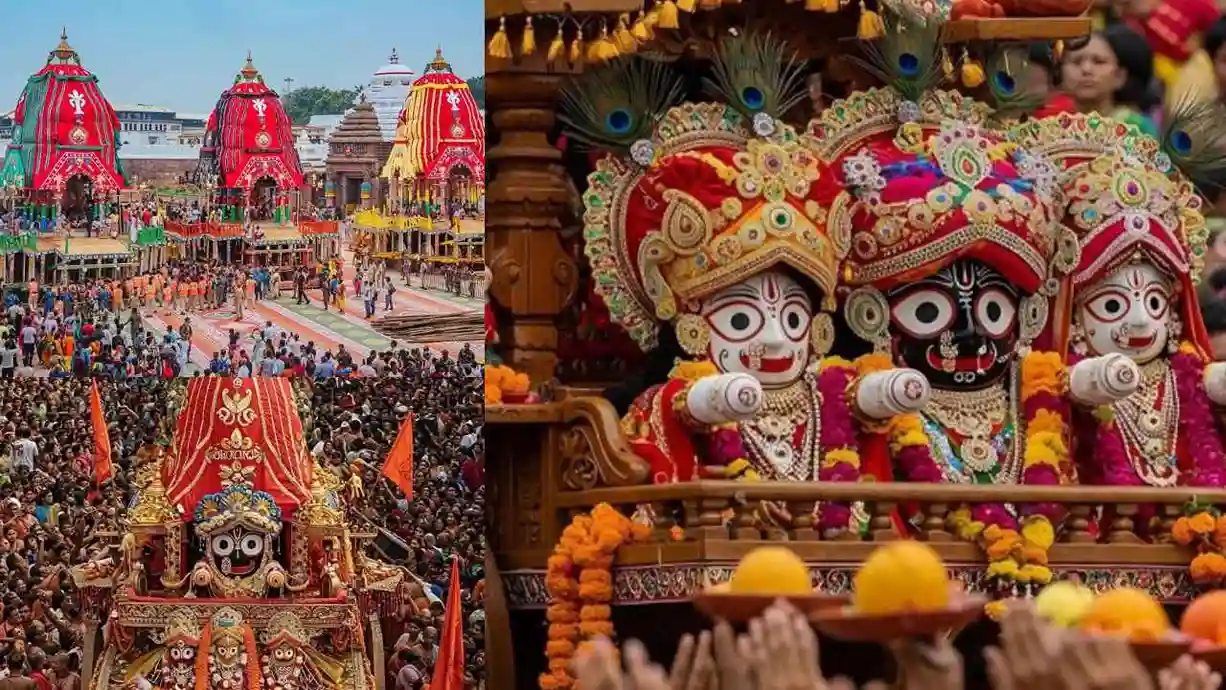
Why is Lord Jagannath’s chariot named Nandighosh?
The word ‘Nandighosh’ is a combination of two words ‘Nandi’ and ‘Ghosh’. While Nandi refers to the divine bull associated with Lord Shiva, Ghosh signifies its roar. The chariot’s origins date back to the Treta Yuga, when Lord Rama, the embodiment of Lord Vishnu, was engaged in a fierce battle with Ravana.
According to legend, Lord Indra gifted Lord Rama, a chariot to aid him in the battle against Ravana. Lord Shiva sent his trusted attendant Nandi to assist Lord Rama. Nandi’s powerful roar destroyed a significant portion of Ravana’s army, paving the way for Lord Rama’s victory. This chariot, empowered by the gods, came to be known as Nandighosh.
Nandighosh Rath features
Nandighosh is a 45 feet high wooden chariot with intricate carvings and decorations, constructed anew each year using specific types of wood. The chariot is typically decorated with vibrant colours, reflecting the divine and festive spirit.
A total of 832 pieces of wood are used in the construction of Nandighosh.
The Sarathi or the charioteer made of wood is known as Daruka.
Nandighosh has 16 wheels, each of seven feet diameter and is decked with red and yellow cloth. The 16 wheels, symbolise the 16 aspects of human life, and is drawn by four white wooden horses named Sankha, Balahaka, Sweta, and Haridaswa.
The horses are also known as Samkha, Rochica, Mochica and Jwalani.
The Sankhachuda rope plays a crucial role in the Rath Yatra, as devotees pull the chariot with great fervour. The rope is also referred to as Varaha, Govardhana and Krishna.
